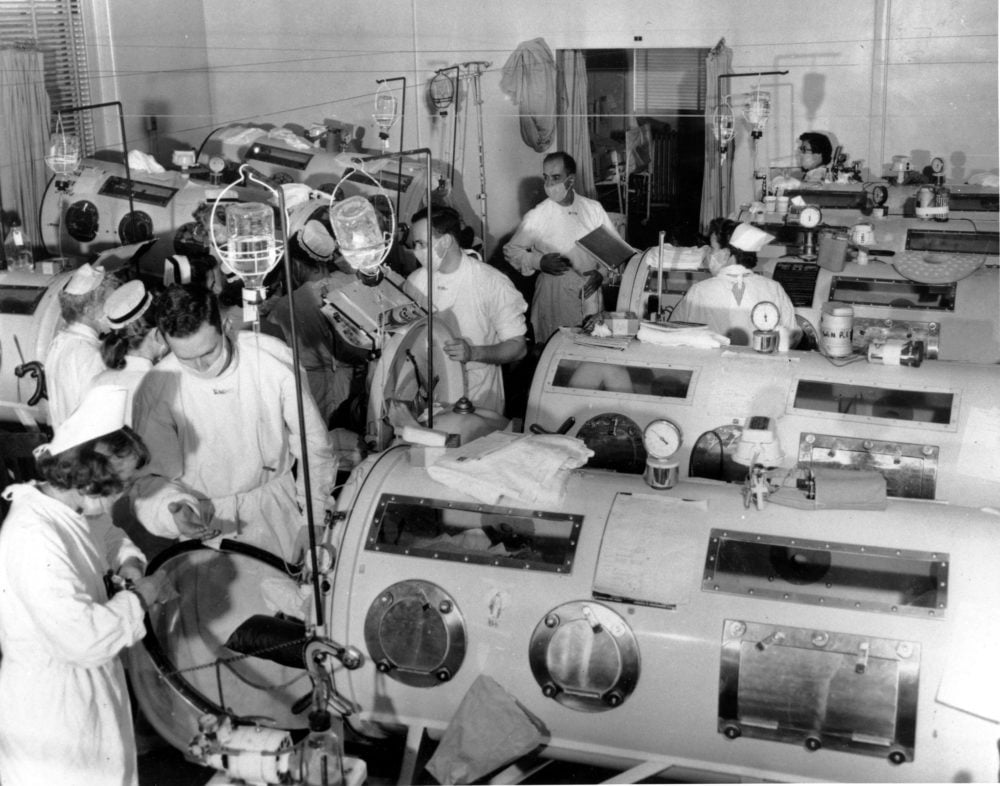The poliovirus was a highly feared illness from the 19th century to the 20th. With people remaining unsure of its route of transmission and a lack of a vaccine, mass hysteria emerged as more and more people began fearing simple human contact, such as handshakes.
With less than 5% of the population developing paralytic polio as most infected individuals were asymptomatic, polio-induced deaths remained low.
What is Polio?
Characterized by severe developments such as paralysis and death, polio remains mitigated into rare cases in numerous countries due to the standard practice of mass vaccination. With that said, some regions are still fighting against polio disease, maintaining its risk of becoming an epidemic.
The poliovirus causes poliomyelitis, which is what we all refer to as polio. Its susceptibility is high for children five years of age and younger and in countries that experience a lack of wide-scale vaccination practices. There are three types of polio; with two sorts of poliovirus terminated, one continues to persist.
Polio is highly infectious from person to person, and there’s still a risk of transmission even when an individual isn’t symptomatic. One is infected through polio by exposure to infected feces and droplets from a person with polio.
Although polio brings fatal developments, 90% of polio-infected individuals have either mild to zero symptoms. The early manifestations of polio resemble the flu, including fever, headache, fatigue, and neck stiffness. And although many people are quick to regain their health, problematic symptoms immediately develop in some cases, including paralysis, numbness, difficulties in breathing, and even death.
Only 5 to 10% of polio-positive people die from polio-induced paralysis; the fact that some people still require care from experiencing polio in their lives at an early age indicates polio’s severity. It’s significant to get vaccinated against polio as it is an effective and safe method that best prevents poliovirus. (Source: Cleveland Clinic)
Polio-Induced Mass Hysteria
Due to the severe yet rare manifestations of polio, people were terrified of contracting the disease. Before the practice of mass vaccination for polio, more than 400,000 Americans caught polio from the late 1930s to the 1970s.
The polio epidemic first occurred in Western Europe and the United States during the later years of the 19th century. The long-spanning outbreak of polio caused the closing of cinemas and public swimming pools. People forbade their children to engage in social gatherings such as birthday parties and playdates in fear of infection.
The fear shared by most people caused quickly-made attempts in the production of the polio vaccine. The polio vaccines made by John Kolmer and Maurice Brodie in the 1930s lacked proper testing, leading to at least six deaths and several contracted cases of vaccine-associated paralytic polio. (Source: Very Well Health)
The polio cases reached an all-time high during 1950 to the point that people assumed that a mere handshake causes polio. With that, many people were relieved and overjoyed with the emergence of Jonas Salk’s polio vaccine, ending the polio epidemic.
Although countless people feared polio during the 19th to 20th century, its fatality rate remained very low. 72% of cases during these times developed asymptomatic polio, and only less than 5% developed paralytic polio. (Source: Science Direct)
